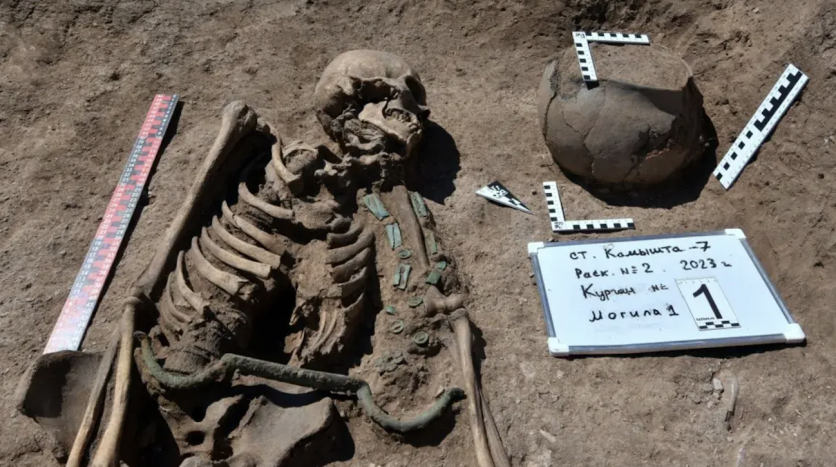An untouched grave of a mysterious person was recently unearthed, and researchers have confirmed that it was a charioteer from 3,000 years ago, buried in Kamyshta, Siberia's Askizsky region in Khakassia, Russia. This also confirms the use of horsedrawn chariots in the area, as it was previously believed that ancient dwellers of the land did not use this type of transportation.
This stellar discovery led researchers to a newfound knowledge about the area's history and culture, where chariots were a used method of transportation for the region.
3,000-Year-Old Charioteer Brings Evidence of Transportation Method

A press release that details the study of researchers from the Institute of Archaeology and Ethnography of the Russian Academy of Sciences reveals the recent discovery of a charioteer's remains from 3,000 years ago. However, it brings more than that, as the charioteer wore a belt that was buried with him, giving evidence of chariot use in this part of Russia.
Russians have considered this a PNN, translating to "an item of unknown purpose," but this recent finding gave them the answer to a long unanswered question.
This also relates to Chinese and Mongolian findings where chariots, horses, and their possessions are buried along with them. The remains were discovered near Kamyshta and were believed to be part of the Lugav culture.
A Belt for Life: This Charioteer was Buried Still Wearing It
The charioteer's remain was found to have a unique metal that attaches to the belt, and according to Live Science, this is a way to strap a person to the chariot and have their hands free when riding.
It is like the seat belt for modern cars, except this one was meant to strap a person standing up while the chariot is pulled by the horse, giving them better control and maneuverability with both hands free.
Ancient Discoveries in the World
With facts and history around the world, many discoveries are still finding ways to challenge the beliefs and previous evidence that give the public a better look into their past and how the world worked before. In a discovery in a Louisiana forest, researchers have found that it was inhabited 12,000 years ago before the first Europeans came.
Rewriting history need to bring compelling reason to justify why new information should be accepted, challenging the already known fact to humans for a long time. This "Ivory Lady" from the ancient Iberian civilization was found to be challenging the known gender roles of the past, with the woman being known as a powerful figure during her time.
History is meant to be rewritten by humans in different generations, but that does not mean that the present people are the only ones that get to do it. The remains of the previous Earth dwellers also give compelling reason and evidence that change previous beliefs, including the charioteer and his belt proving that it was a used method of transportation from before.
Related Article : Newly Discovered Wooden Hunting Stick Affirms Human's Woodworking Skills in Ancient Times

ⓒ 2025 TECHTIMES.com All rights reserved. Do not reproduce without permission.




